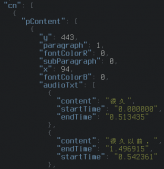这是我写BASH程序的招式。这里本没有什么新的内容,但是从我的经验来看,人们爱滥用BASH。他们忽略了计算机科学,而从他们的程序中创造的是“大泥球”(译注:指架构不清晰的软件系统)。
在此我告诉你方法,以保护你的程序免于障碍,并保持代码的整洁。
一、不可改变的全局变量
1.尽量少用全局变量
2.以大写命名
3.只读声明
4.用全局变量来代替隐晦的$0,$1等
在我的程序中常使用的全局变量:
readonly PROGNAME=$(basename $0)
readonly PROGDIR=$(readlink -m $(dirname $0))
readonly ARGS="$@"
二、一切皆是局部的
所有变量都应为局部的。
change_owner_of_file() {
local filename=$1
local user=$2
local group=$3
chown $user:$group $filename
}
change_owner_of_files() {
local user=$1; shift
local group=$1; shift
local files=$@
local i
for i in $files
do
chown $user:$group $i
done
}
1.自注释(self documenting)的参数
2.通常作为循环用的变量i,把它声明为局部变量是很重要的。
3.局部变量不作用于全局域。
kfir@goofy ~ $ local a
bash: local: can only be used in a function
三、main()
1.有助于保持所有变量的局部性
2.直观的函数式编程
3.代码中唯一的全局命令是:main
main() {
local files="/tmp/a /tmp/b"
local i
for i in $files
do
change_owner_of_file kfir users $i
done
}
main
四、一切皆是函数
唯一全局性运行的代码是:
- 不可变的全局变量声明
- main()函数
1.保持代码整洁
2.过程变得清晰
main() {
local files=$(ls /tmp | grep pid | grep -v daemon)
}
temporary_files() {
local dir=$1
ls $dir \
| grep pid \
| grep -v daemon
}
main() {
local files=$(temporary_files /tmp)
}
1.第二个例子好得多。查找文件是temporary_files()的问题而非main()的。这段代码用temporary_files()的单元测试也是可测试的。
2.如果你一定要尝试第一个例子,你会得到查找临时文件以和main算法的大杂烩。
test_temporary_files() {
local dir=/tmp
touch $dir/a-pid1232.tmp
touch $dir/a-pid1232-daemon.tmp
returns "$dir/a-pid1232.tmp" temporary_files $dir
touch $dir/b-pid1534.tmp
returns "$dir/a-pid1232.tmp $dir/b-pid1534.tmp" temporary_files $dir
}
如你所见,这个测试不关心main()。
五、调试函数
带-x标志运行程序:
bash -x my_prog.sh
只调试一小段代码,使用set-x和set+x,会只对被set -x和set +x包含的当前代码打印调试信息。
temporary_files() {
local dir=$1
set -x
ls $dir \
| grep pid \
| grep -v daemon
set +x
}
打印函数名和它的参数:
temporary_files() {
echo $FUNCNAME $@
local dir=$1
ls $dir \
| grep pid \
| grep -v daemon
}
调用函数:
temporary_files /tmp
会打印到标准输出:
六、代码的清晰度
这段代码做了什么?
main() {
local dir=/tmp
[[ -z $dir ]] \
&& do_something...
[[ -n $dir ]] \
&& do_something...
[[ -f $dir ]] \
&& do_something...
[[ -d $dir ]] \
&& do_something...
}
main
让你的代码说话:
is_empty() {
local var=$1
[[ -z $var ]]
}
is_not_empty() {
local var=$1
[[ -n $var ]]
}
is_file() {
local file=$1
[[ -f $file ]]
}
is_dir() {
local dir=$1
[[ -d $dir ]]
}
main() {
local dir=/tmp
is_empty $dir \
&& do_something...
is_not_empty $dir \
&& do_something...
is_file $dir \
&& do_something...
is_dir $dir \
&& do_something...
}
main
七、每一行只做一件事
用反斜杠\来作分隔符。例如:
temporary_files() {
local dir=$1
ls $dir | grep pid | grep -v daemon
}
可以写得简洁得多:
temporary_files() {
local dir=$1
ls $dir \
| grep pid \
| grep -v daemon
}
符号在缩进行的开始
符号在行末的坏例子:(译注:原文在此例中用了temporary_files()代码段,疑似是贴错了。结合上下文,应为print_dir_if_not_empty())
print_dir_if_not_empty() {
local dir=$1
is_empty $dir && \
echo "dir is empty" || \
echo "dir=$dir"
}
好的例子:我们可以清晰看到行和连接符号之间的联系。
print_dir_if_not_empty() {
local dir=$1
is_empty $dir \
&& echo "dir is empty" \
|| echo "dir=$dir"
}
八、打印用法
不要这样做:
echo "this prog does:..."
echo "flags:"
echo "-h print help"
它应该是个函数:
usage() {
echo "this prog does:..."
echo "flags:"
echo "-h print help"
}
echo在每一行重复。因此我们得到了这个文档:
usage() {
cat <<- EOF
usage: $PROGNAME options
Program deletes files from filesystems to release space.
It gets config file that define fileystem paths to work on, and whitelist rules to
keep certain files.
OPTIONS:
-c --config configuration file containing the rules. use --help-config to see the syntax.
-n --pretend do not really delete, just how what you are going to do.
-t --test run unit test to check the program
-v --verbose Verbose. You can specify more then one -v to have more verbose
-x --debug debug
-h --help show this help
--help-config configuration help
Examples:
Run all tests:
$PROGNAME --test all
Run specific test:
$PROGNAME --test test_string.sh
Run:
$PROGNAME --config /path/to/config/$PROGNAME.conf
Just show what you are going to do:
$PROGNAME -vn -c /path/to/config/$PROGNAME.conf
EOF
}
注意在每一行的行首应该有一个真正的制表符‘\t'。
在vim里,如果你的tab是4个空格,你可以用这个替换命令:
:s/^ /\t/
九、命令行参数
这里是一个例子,完成了上面usage函数的用法。我从http://kirk.webfinish.com/2009/10/bash-shell-script-to-use-getopts-with-gnu-style-long-positional-parameters/ 得到这段代码
cmdline() {
# got this idea from here:
# http://kirk.webfinish.com/2009/10/bash-shell-script-to-use-getopts-with-gnu-style-long-positional-parameters/
local arg=
for arg
do
local delim=""
case "$arg" in
#translate --gnu-long-options to -g (short options)
--config) args="${args}-c ";;
--pretend) args="${args}-n ";;
--test) args="${args}-t ";;
--help-config) usage_config && exit 0;;
--help) args="${args}-h ";;
--verbose) args="${args}-v ";;
--debug) args="${args}-x ";;
#pass through anything else
*) [[ "${arg:0:1}" == "-" ]] || delim="\""
args="${args}${delim}${arg}${delim} ";;
esac
done
#Reset the positional parameters to the short options
eval set -- $args
while getopts "nvhxt:c:" OPTION
do
case $OPTION in
v)
readonly VERBOSE=1
;;
h)
usage
exit 0
;;
x)
readonly DEBUG='-x'
set -x
;;
t)
RUN_TESTS=$OPTARG
verbose VINFO "Running tests"
;;
c)
readonly CONFIG_FILE=$OPTARG
;;
n)
readonly PRETEND=1
;;
esac
done
if [[ $recursive_testing || -z $RUN_TESTS ]]; then
[[ ! -f $CONFIG_FILE ]] \
&& eexit "You must provide --config file"
fi
return 0
}
你像这样,使用我们在头上定义的不可变的ARGS变量:
main() {
cmdline $ARGS
}
main
十、单元测试
1.在更高级的语言中很重要。
2.使用shunit2做单元测试
test_config_line_paths() {
local s='partition cpm-all, 80-90,'
returns "/a" "config_line_paths '$s /a, '"
returns "/a /b/c" "config_line_paths '$s /a:/b/c, '"
returns "/a /b /c" "config_line_paths '$s /a : /b : /c, '"
}
config_line_paths() {
local partition_line="$@"
echo $partition_line \
| csv_column 3 \
| delete_spaces \
| column 1 \
| colons_to_spaces
}
source /usr/bin/shunit2
这里是另一个使用df命令的例子:
DF=df
mock_df_with_eols() {
cat <<- EOF
Filesystem 1K-blocks Used Available Use% Mounted on
/very/long/device/path
124628916 23063572 100299192 19% /
EOF
}
test_disk_size() {
returns 1000 "disk_size /dev/sda1"
DF=mock_df_with_eols
returns 124628916 "disk_size /very/long/device/path"
}
df_column() {
local disk_device=$1
local column=$2
$DF $disk_device \
| grep -v 'Use%' \
| tr '\n' ' ' \
| awk "{print \$$column}"
}
disk_size() {
local disk_device=$1
df_column $disk_device 2
}
这里我有个例外,为了测试,我在全局域中声明了DF为非只读。这是因为shunit2不允许改变全局域函数。



